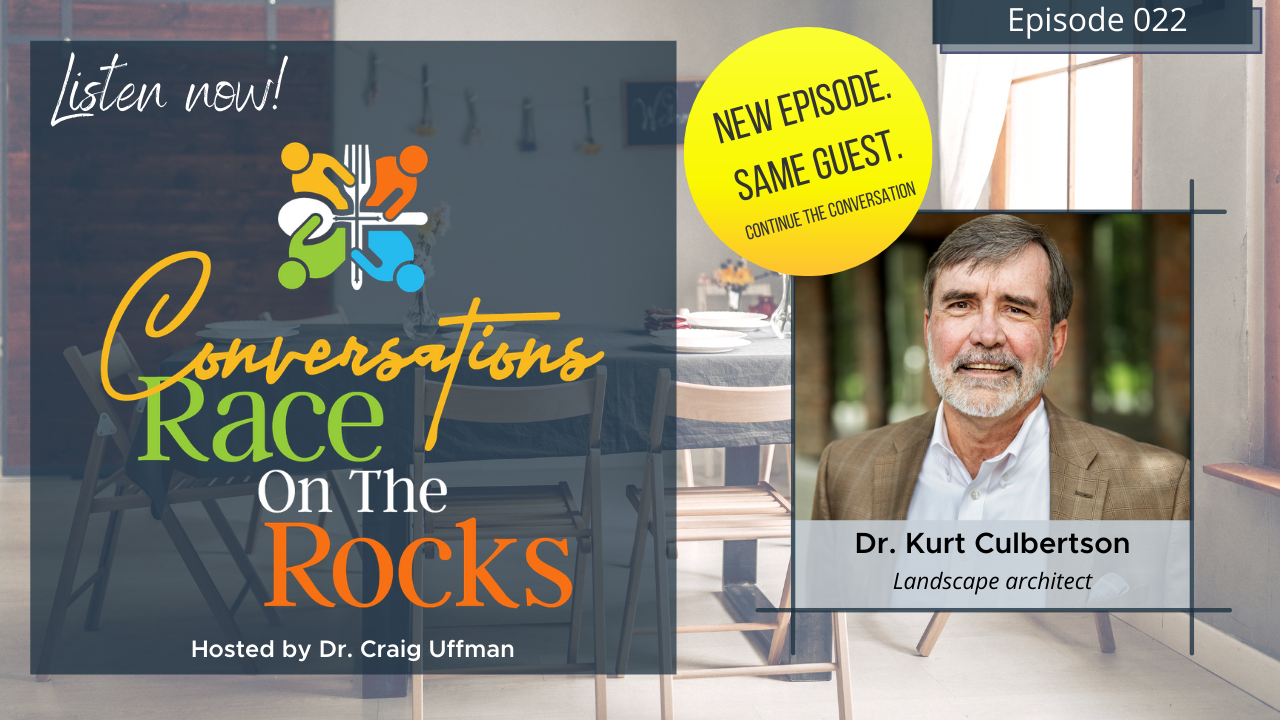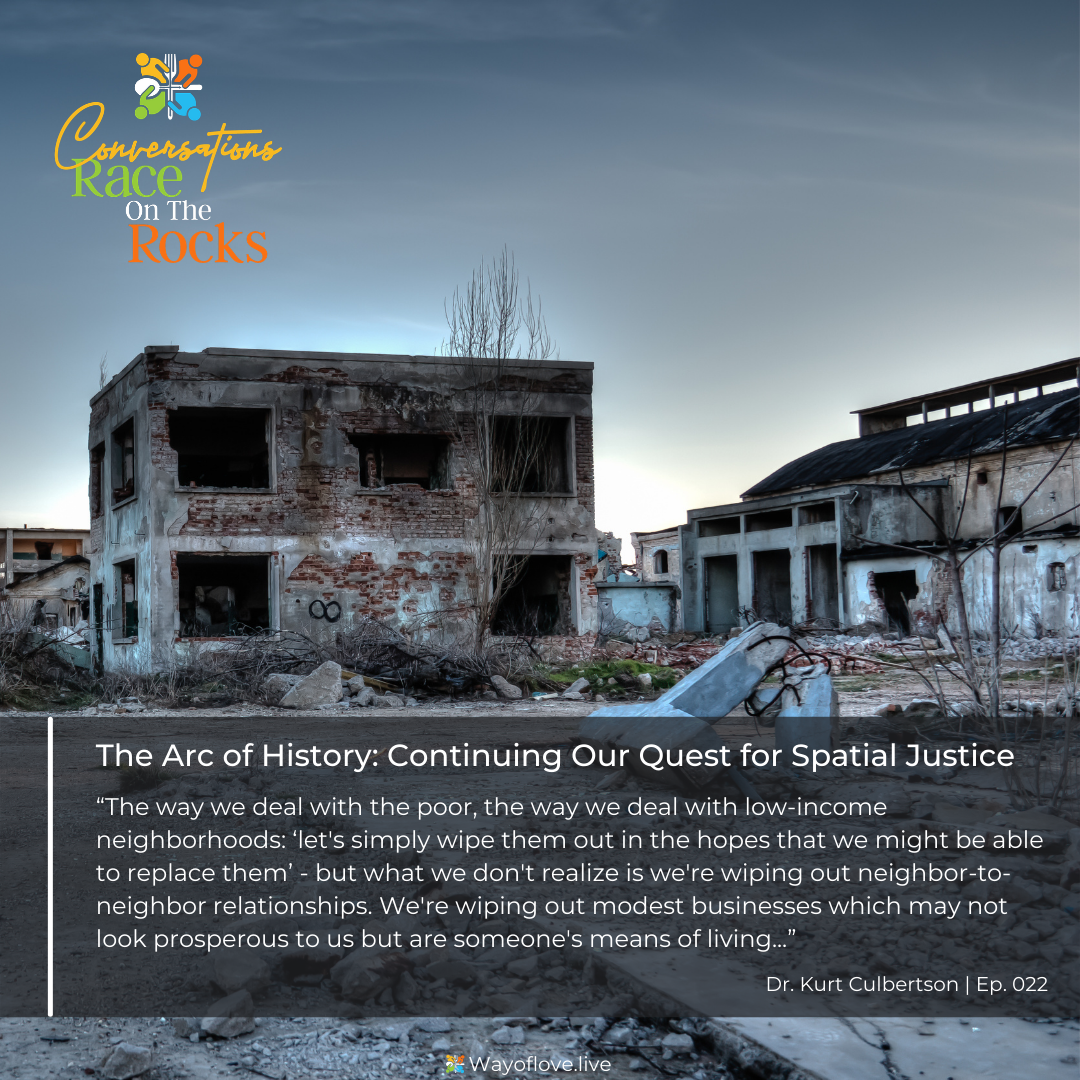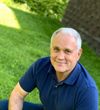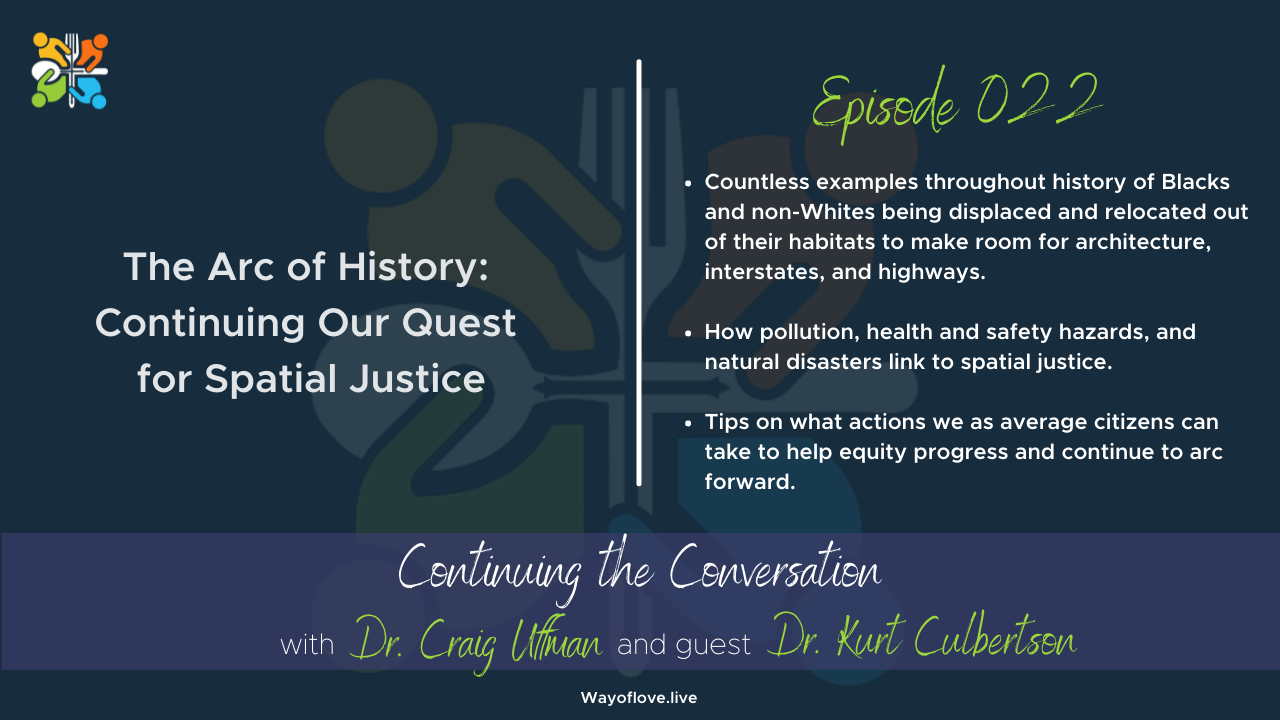“...We’re increasingly aware of the challenge of spatial equity, right? There's a lot of conversation about it now. Now we have the tools to map it, to explain it, to illustrate it, to develop strategies around it. I think that leads to a great deal of confidence.” - Dr. Kurt Culbertson
Listen now on Spotify, Apple Podcasts, Google Podcasts, Stitcher and more!

Hello, folks! In the last episode, Dr. Kurt Culbertson joined us to help us understand some jargon from his life as a landscape architect – words and terms such as vacant land, habitat, and spatial justice. He also began to help us understand how historic government policies as well as local traditions have combined to limit the habitat choices especially of non-Whites and have constrained the flow of resources to the low income neighborhoods in which they have been allowed to live.
We concluded with a brief discussion of how land use and habitat choice are great examples that denote what we mean when we use phrases such as structural racism. We therefore finally dug into defining what structural racism means with some evidence and examples that are really hard to deny. We will be picking up where we left off in this episode, digging even more deeply into some persistent racial inequities in the domain of spatial justice.
As a reminder, Dr. Kurt Culbertson is a scholar and a practitioner in the field of urban renewal where he uses his expertise as a landscape architect to help cities imagine how to design landscapes that consider environmental, social, and economic factors so that they can best optimize spatial justice in the urban renewal efforts. Dr. Culbertson is chair and C.E.O. of Design Workshop, an international design studio out of Aspen, Colorado but with offices all over the world. They are most famous for their twelve projects that were selected as performance based case studies by the Landscape Architecture Foundation. In 2016, Kurt was awarded the American Society of Landscape Architects Medal which is the highest possible honor in his profession, and he is also the pastor of the ASLA Council of Fellows and The Cultural Landscape Foundation.
Kurt returns today to continue discussing inequities in the design of our communities today. Dr. Culbertson provides us with countless examples throughout history of Blacks and non-Whites being displaced and relocated out of their habitats to make room for architecture, interstates and highways, and so on – examples of egregious disturbances within the world of spatial justice. He touches upon pollution and health and safety hazards and their links to spatial justice and also offers some hope for the future, pointing toward an eminent quote from Theodore Parker as inspiration. He even offers some tips on what actions that we as average citizens can take to help equity progress and continue to arc forward.
These past two episodes with Kurt have been such a blessing because they have made it very clear what some folks mean when they refer to structural racism, a reality that we still need to wrestle with today. He has given us concrete examples as someone who is actually observing things on the ground, examples that point toward how historic policies and practices continue to shape our present. We covered so much ground, and I thank Kurt for joining us.
In our next episode, we will pivot from this practical deep dive into spatial justice in order to hear the personal experience and wisdom of Bishop Prince Singh, a man who has wrestled with racism as a person of color both in India and here in the United States. Prince spent a long time leading people to grapple with the challenges of racial reconciliation, and he will be joining us to help us reflect on phrases like caste and hierarchies of value. Until next time, thanks for tuning in, and be sure to invite your friends to listen as well!
Questions for Clergy and Other Group Leaders
- How does exposure to toxic pollution correlate with class and race? Why?
- How did St. Louis realtors in the 1960s and 1970s use blockbusting to generate profits and transformed entire neighborhoods they knew had environmental time bombs from white to black in a matter of years?
- How did the East Bank/West Bank vote on taxes to support flood insurance in the New Orleans metro area impact non-whites after the floods of 1980?
- Why do hurricanes impact non-whites disproportionately more than whites?

Show Notes
[3:48] – Dr. Culbertson offers some egregious examples of disturbances in the domain of spatial justice.
[5:02] – Dr. Culbertson provides examples of population displacements and slum clearances in cities.
[8:02] – Dr. Uffman and Dr. Culbertson discuss Robert Moses and his move to intentionally design projects to exclude non-Whites and the poor.
[10:20] – Dr. Culbertson expands on how extensive the impact of the interstate highway system relocating Blacks and non-Whites has been.
[12:40] – Dr. Culbertson comments on how urban renewal legislation through the 1970s negatively impacted non-Whites.
[15:28] – Air quality and water quality affect public health which is another disturbance.
[18:25] – The projects in New Orleans leading to de facto segregation around the same time as Civil Rights legislation, Dr. Culbertson explains, was an unintended consequence.
[20:43] – Exposure to toxic pollution is correlated with class and race, and Dr. Culbertson elaborates upon that correlation.
[24:07] – Dr. Uffman and Dr. Culbertson discuss the phenomenon of flooding in cities and how it disproportionately affects non-Whites.
[26:30] – Dr. Culbertson expounds upon why natural disasters such as Hurricane Katrina tend to disproportionately impact non-Whites.
[29:25] – Dr. Culbertson reflects upon management decisions made to address shrinking cities and what that portends for non-Whites.
[31:47] – Dr. Culbertson points to a parks and open space plan that he just finished in Vancouver.
[34:23] – We discover how fragmented metropolitan governance has negatively impacted our ability to deal with spatial equity.
[37:33] – Dr. Culbertson points to some locations as grounds for hope.
[40:22] – Dr. Culbertson explains why taking formerly polluted lands and converting them into open space gives him hope and offers more examples of reasons for hope.
[42:40] – We learn how we can get involved in moving equity forward.
[44:23] – Dr. Culbertson analyzes the meaning behind a famous quote by Theodore Parker.
Links and Resources
Landscape Architecture Foundation - Website
ASLA Council of Fellows - Website
The Cultural Landscape Foundation – Website
Robert A. Caro - The Power Broker: Robert Moses and the Fall of New York
Environmental Protection Agency - EJSCREEN: Environmental Justice Screening and Mapping Tool
NPR – “Theodore Parker and the 'Moral Universe'”
Connect with Dr. Craig Uffman:

